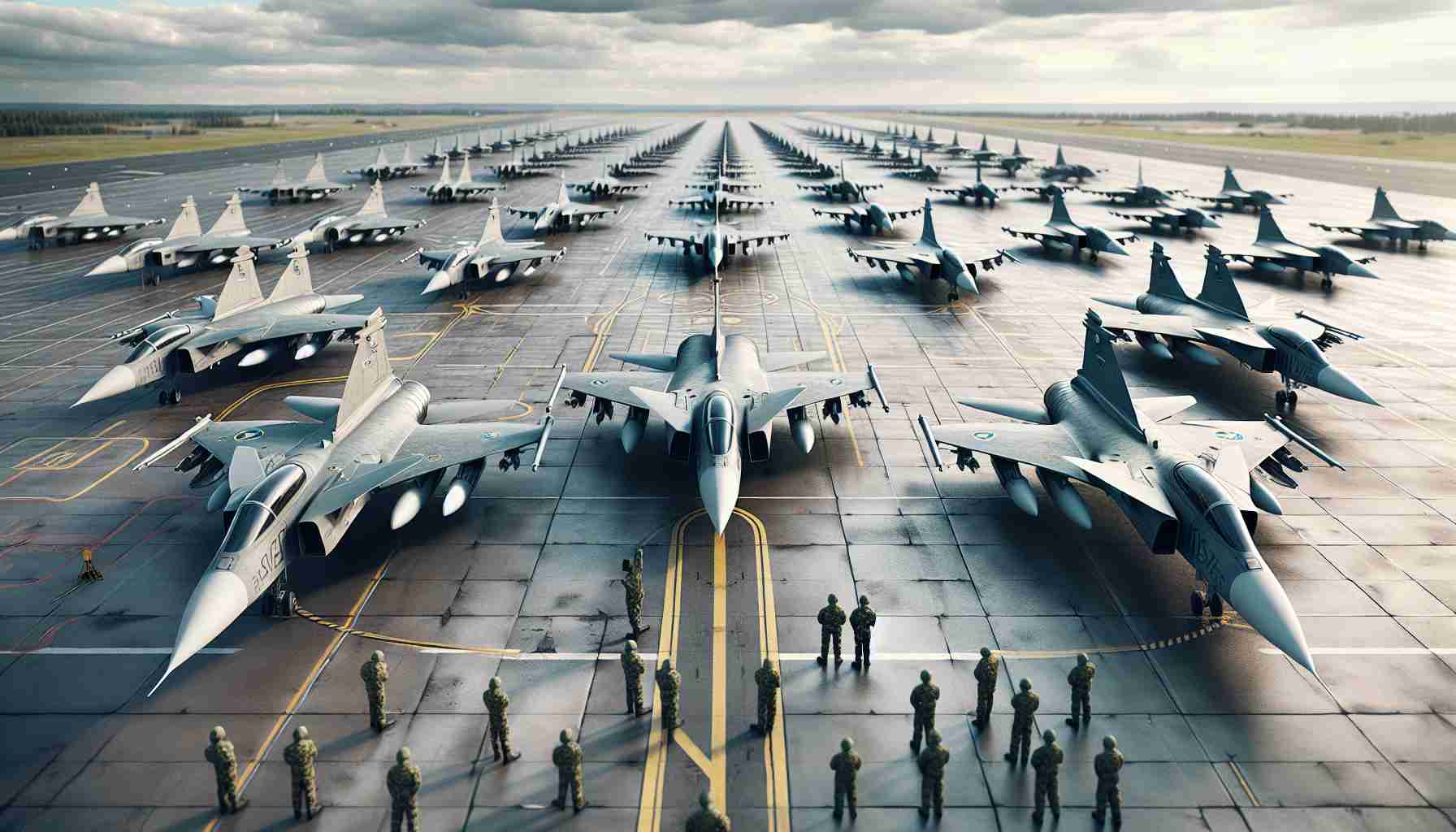Sweden Looks to Bolster Ukraine’s Defense with Potential Fighter Jet Donation
Sweden appears to be moving closer to supplying Ukraine with advanced fighter jets, a significant development in the ongoing conflict. During a joint press conference in Stockholm on November 22, Swedish Defense Minister Pal Jonson revealed that the latest aid package for Ukraine includes spare parts for 14 Saab JAS 39 Gripen combat aircraft. This announcement suggests Sweden might soon transfer these jets to Kyiv, a move that has taken time due to both strategic and logistical considerations.
The aid package for Ukraine, valued at approximately SEK4.6 billion (USD415 million), highlights a notable step by Sweden toward possibly arming Ukraine with Gripen fighters. According to Jonson, the spare parts related to the Gripen form a substantial portion of this package. This allocation indicates a shift in Sweden’s previously cautious approach.
Though the emphasis remains on delivering F-16 Fighting Falcons as part of a global coalition, comprising countries such as Belgium, Denmark, and the United States, Jonson suggested that the groundwork is being laid for potential future support involving the Gripen.
Swedish experts have long argued for the Gripen’s suitability for Ukraine’s defensive needs. Known for its adaptability and low maintenance requirements, the Gripen can operate from makeshift airstrips and motorways. As Ukraine continues to deploy the first batch of F-16s received earlier this year, the possible addition of Gripen fighters could further strengthen its air defense against Russian advances.
This development follows France’s pledge to provide Ukraine with Mirage 2000 jets by 2025, indicating increasing military support from Western nations.
Revolutionizing Air Defense: The Potential Impact of Sweden’s Fighter Jet Contribution to Ukraine
The possibility of Sweden supplying Ukraine with advanced Saab JAS 39 Gripen fighter jets marks a pivotal evolution in military technology and international defense strategy. This potential move could shift the dynamics of the Ukrainian conflict and introduce new technological synergies in modern warfare.
The Technological Edge of the Gripen
The Saab JAS 39 Gripen is celebrated for its robust adaptability and efficiency, setting it apart from other fighter jets. Its design allows it to operate from unconventional runways, such as highways, offering significant tactical advantages. This capability provides a critical edge in conflict zones where traditional airstrips may not be accessible or are compromised.
Comparatively, the Gripen’s low maintenance requirements allow for sustained operations without the exhaustive logistics other fighter models might demand. This feature could dramatically enhance Ukraine’s capability to maintain air superiority with limited resources.
Advantages and Disadvantages for Technological Development
One of the advantages of Sweden’s potential move is the transfer of advanced aeronautical technology to Ukraine, which may stimulate local technological advancement and innovation. Implementing and maintaining such sophisticated systems could drive growth in domestic industries and education, fostering a new generation of technicians and engineers in Ukraine.
However, there are also challenges. Integrating new fighter jets into Ukraine’s air force will require significant training and logistical adjustments. This necessity raises questions about the immediacy of their impact on the ongoing conflict. The time needed to fully deploy and operate such advanced aircraft could be a disadvantage during critical moments of defense.
Broader Implications for Global Technology
The support from Western nations, including potential contributions from Sweden, suggests an ongoing technological shift within global military alliances. This re-alignment could lead to increased collaboration on defense technologies between European regions, promoting a unified front in defense strategies.
Yet, controversies abound. The military aid highlights the fine line between defense support and escalation risks. Is bolstering Ukraine’s air defense with advanced jets an essential deterrent, or does it risk provoking further conflict? These questions underscore the delicate balance of international military interventions.
What Does This Mean for Humanity’s Technological Trajectory?
Potential technological spillovers from such donations could influence commercial aerospace advancements, integrating innovative materials and technologies initially developed for defense purposes. However, ethical considerations loom large, contemplating whether advancements driven by conflict serve humanity’s best interests.
The world watches as Sweden deliberates its next steps, understanding that decisions like these not only affect immediate geopolitical landscapes but also shape the technological and humanitarian trajectories for generations.
For more information on global defense strategies and innovation, visit the U.S. Department of Defense and NATO websites.







